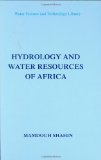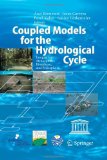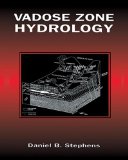
|
Snow and Glacier Hydrology
This book provides an updated discussion of snow and glacier hydrology, drawing on the results of recent investigations. It serves as a source of reference at the senior undergraduate or beginning graduate level and stimulates further interest in this important part of the hydrologic cycle. |

|
Permafrost Hydrology
Permafrost Hydrology systematically elucidates the roles of seasonally and perennially frozen ground on the distribution, storage and flow of water. Cold regions of the World are subject to mounting development which significantly affects the physical environment. Climate change, natural or human-induced, reinforces the impacts. Knowledge of surface and ground water processes operating in permafrost terrain is fundamental to planning, management and conservation. This book is an indispensable reference for libraries and researchers, an information source for practitioners, and a valuable text for training the next generations of cold region scientists and engineers. |
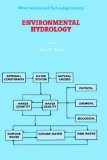
|
Environmental Hydrology
Environmental Hydrology presents a unified approach to the role of hydrology in environmental planning and management, emphasizing the consideration of the hydrological continuum in determining the fate and migration of chemicals as well as micro-organisms in the environment, both below the ground as well as on it. The eco-hydrological consequences of environmental management are also discussed, and an up-to-date account of the mathematical modeling of pollution is also presented. Audience: Invaluable reading for senior undergraduates and beginning graduates, civil, environmental, and agricultural engineers, and geologists and climatologists. |

|
Geographical Information Systems in Hydrology
This book provides a comprehensive treatment of GIS technology and its application to a range of hydrologic problems. It contains 16 chapters, written by leading scientists from around the globe, that provide an in-depth discussion of GIS applications. Hydrologic modeling is becoming increasingly global, in terms of both spatial scale and depth of treatment. This globalization of hydrology is placing new and greater demands for data, and more sophisticated techniques for managing and processing them. It is now possible to meet those demands through application of remote sensing and GIS technology. Audience: The book will be useful to faculty members; graduate students; civil, agricultural, environmental, and water engineers; geographers; environmental planners and managers; as well as those engaged in the private and government sectors in the area of environmental and water management. |
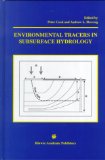
|
Environmental Tracers in Subsurface Hydrology
Environmental Tracers in Subsurface Hydrology synthesizes the research of specialists into a comprehensive review of the application of environmental tracers to the study of soil water and groundwater flow. The book includes chapters which cover ionic tracers, noble gases, chlorofluorocarbons, tritium, chlorine-36, oxygen-18, deuterium, and isotopes of carbon, strontium, sulphur and nitrogen. Applications of the tracers include the estimation of vertical and horizontal groundwater velocities, groundwater recharge rates, inter-aquifer leakage and mixing processes, chemical processes and palaeohydrology. Practicing hydrologists, soil physicists and hydrology professors and students will find the book to be a valuable support in their work. |
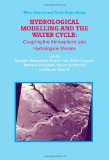
|
Hydrological Modelling and the Water Cycle: Coupling the Atmospheric and Hydrological Models
This collected work reports on the state of the art of hydrological model simulation, as well as the methods for satellite-based rainfall estimation. Mainly addressed to scientists and researchers, the contributions have the structure of a standard paper appearing in most cited hydrological, atmospheric and climate journals. Several already-known hydrological models and a few novel ones are presented, as well as the satellite-based precipitation techniques. As the field of hydrologic modeling is experiencing rapid development and transition to application of distributed models, many challenges including overcoming the requirements of compatible observations of inputs and outputs are addressed. The many contributing authors, who are well established in this field, provide readers with a timely overview of the ongoing research on these topics. The level of interest and active involvement in the discussions clearly demonstrate the importance the scientific community places on challenges related to the coupling of atmospheric and hydrologic models. |
|
Hydrology and Water Resources of Africa
This book provides a unique coverage of the hydrology and water resources of Africa, including the neighbouring islands. The contents are covered in fourteen chapters. Emphasis is laid on the components of the hydrological cycle; precipitation, evaporation and runoff of both land and insular Africa. The hydrologic characteristics of sixteen rivers and wadi basins of different sizes are presented and discussed. In addition, hydrology of lakes, and other wetlands and storage reservoirs are presented. Furthermore, the principal groundwater aquifers are reviewed. Last, but not least, the role of water resources in the overall development of Africa is highlighted. Audience: This volume should appeal to researchers and professionals working in the fields of civil and agricultural engineering, physical geography, African studies, and those interested in surface and groundwater resources in Africa. |
|
Hydrology and Water Resources of AfricaCoupled Models for the Hydrological Cycle: Integrating Atmosphere, Biosphere and Pedosphere
This book considers an array of state-of-the-art coupling and modelling concepts. First the relevant Earth system cycles are presented, followed by a discussion on scale issues and multiple equilibria. Inter- and intra-compartmental coupling is addressed, along with a debate on non-linearities and questions of parameterisation. Several applications are presented, where a focus is on cases where the hydrological cycle plays a central role. |
|
Vadose Zone Hydrology
Vadose Zone Hydrology describes the elements of the physical processes most often encountered by hydrogeologists and ground-water engineers in their vadose zone projects. It illustrates the application of soil physics to practical problems relevant to the characterization and monitoring of the vadose zone. It includes an introduction to physical processes, including basic flow theory, and provides examples of important field-scale processes that must be recognizable by hydrogeologists. Considerable attention is given to the concepts of recharge, including how it is most accurately evaluated in the vadose zone. Field and laboratory methods for characterizing hydraulic properties in the vadose zone are also covered, and case studies illustrating these methods are provided. New and emerging technologies for monitoring the vadose zone, particularly for the purpose of detecting contaminants, are highlighted. In the last section of the book, additional case studies are presented, demonstrating applications related to seepage detection, landfill monitoring, and soil gas investigations. This book is written from the perspective of hydrogeologists and is designed to be directly applicable and to maintain continuity and consistency between chapters. It will be an invaluable primer for environmental or geotechnical consultants, regulators, or students who have no prior formal academic training in unsaturated flow concepts. Because the text contains some of the latest advances in this field, it will be an excellent reference for geologists and engineers currently working on problems of vadose zone hydrology. |







